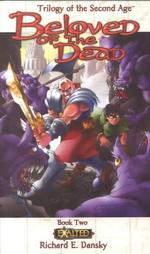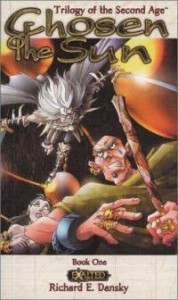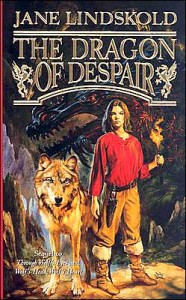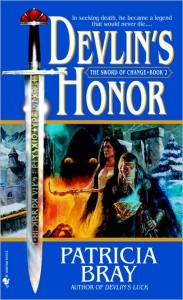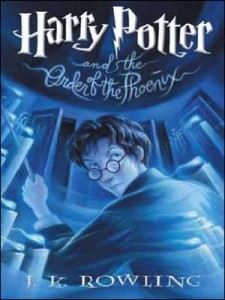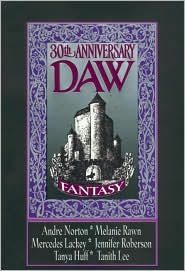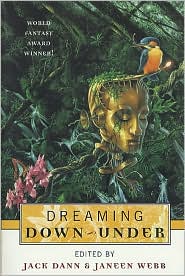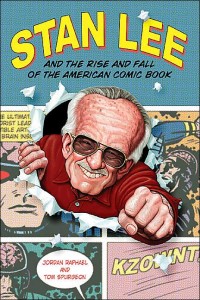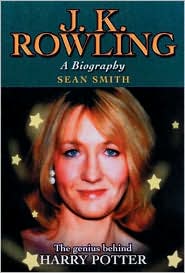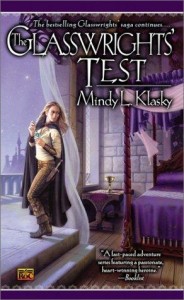
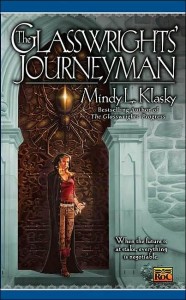 All Rani Trader wanted to do was become a glasswright, part of one of Morenia’s most powerful and talented guilds. Her parents sacrificed as much as they possibly could to buy Rani’s way into the guild as an apprentice, little knowing that they’d started in motion Rani’s involvement with kingdom-shattering events: an assassination gone slightly awry, a warning spoken too late, a prince fallen, and a guild blamed. The Glasswrights were destroyed, imprisoned, tortured, and exiled. Rani herself fled, going undercover as one of the city’s undesirables, the Touched. From there to soldier’s companion to religious pilgrim to royal guest to conspirator, she played numerous parts in her quest to clear her own name and that of her guild. She made friends of Prince Halaravilli, later King of all Liantine, and in the end, she was able to begin the long road towards rebuilding her lost dreams. As Rani Trader, or Ranita Glasswright, she’s become a pivotal figure like she never could have imagined, with powerful friends and enemies. She’s even dealt with troubles from outside Liantine in the form of a children’s army and a tyrannical king bent on dominating everything around him. All this was in The Glasswrights’ Apprentice and The Glasswrights’ Progress.
All Rani Trader wanted to do was become a glasswright, part of one of Morenia’s most powerful and talented guilds. Her parents sacrificed as much as they possibly could to buy Rani’s way into the guild as an apprentice, little knowing that they’d started in motion Rani’s involvement with kingdom-shattering events: an assassination gone slightly awry, a warning spoken too late, a prince fallen, and a guild blamed. The Glasswrights were destroyed, imprisoned, tortured, and exiled. Rani herself fled, going undercover as one of the city’s undesirables, the Touched. From there to soldier’s companion to religious pilgrim to royal guest to conspirator, she played numerous parts in her quest to clear her own name and that of her guild. She made friends of Prince Halaravilli, later King of all Liantine, and in the end, she was able to begin the long road towards rebuilding her lost dreams. As Rani Trader, or Ranita Glasswright, she’s become a pivotal figure like she never could have imagined, with powerful friends and enemies. She’s even dealt with troubles from outside Liantine in the form of a children’s army and a tyrannical king bent on dominating everything around him. All this was in The Glasswrights’ Apprentice and The Glasswrights’ Progress.
Now, in The Glasswrights’ Journeyman, Rani is forced to once again come to the aid of the land she loves. A terrible fire has devastated the capital city of Morenia, doing more to destroy the peace and prosperity than any outside agitation ever could have. Amid rumors that his reign is in trouble, King Hal must try to rebuild his city and his power base. But the dangerous and manipulative Fellowship of Jair has a price as well, a near-ruinous demand for gold that would break the kingdom even in a good season; worse yet, the powerful Church has the same monetary demands in mind. Caught between duty to his kingdom and loyalty to a conspiracy that is willing to kill him, Hal has to make some hard decisions. One of the few people he knows he can trust without reservation is Rani, but even she has conflicting loyalties. Will he be forced to marry the princess of nearby Liantine, and deal with her father, the volatile King Teheboth? Or are there still other options?
Meanwhile, mirroring Rani’s ambitions, a young woman named Mareka seeks to achieve her rank as journeyman in the enigmatically deadly spiderguild, a place where the poisonous spiders are valued more than any single human life, and a mistake often leads to death. Ambitious and cunning, Mareka is the perfect product of her guild, willing to spin a web of lies and deceit to get her way. But what she doesn’t know is that her fate is intertwined with that of Hal and Rani.
In the end, it’s up to Rani and her friends, including a traveling troupe of Players, to find a solution that serves the greatest good. For Morenia’s rebuilding, for Hal’s “tithe” to the Church and “donation” to the Fellowship, for Princess Berylina of Liantine, who’s been touched by the gods, and for Mareka of the spiderguild, who would do anything to preserve her life after the guild understands the nature of her betrayal. But even as Rani makes new allies and finds love, she’s forced to turn on someone who trusted her, forced to weigh the life of a friend against the needs of many. Not everyone will come home from Liantine.
In The Glasswrights’ Test, Rani’s journey hits a new level of danger and complexity as the machinations of the Fellowship of Jair take on a surprisingly ruthless note. Their ambitions thwarted before, now they seek to fulfill them through other means. The former members of the Morenian Glasswrights’ Guild have relocated to Briantia, a land overflowing with religious dedication to the thousand gods and to Jair, the Holy Pilgrim. There, the guildmaster, an embittered man named Parion, dreams of the old days, before he and his fellow glasswrights were imprisoned, crippled, and ultimately exiled. When the Fellowship of Jair offers him a price he can’t refuse, just to invite “The Traitor,” Ranita Glasswright, to the guild to test for her master’s rank, he reluctantly accepts. And so the wheels are set in motion.
Rani, her friend Mair, and the gods-touched Princess Berylina travel to Briantia. Rani to test for master, Mair as part of a diplomatic effort, and Berylina to undergo a religious pilgrimage that will change her life forever. Rani’s and Berylina’s stories unfold separately as they both realize just what lies in store for them in this foreign land.
For Rani, it’s a time of testing, and of challenged loyalties. She wants nothing more than to be judged as a master in the guild, to be accepted by the guild she once was responsible for destroying. But they haven’t forgotten that, and have no intention of making it easy … or even possible. Even her best may not be enough to overcome the bitter hatred Parion and his apprentices have for the one they think of as The Traitor.
For Berylina, it’s a time of change and growth, of revelations and explorations, and destiny. She alone can see, hear, smell, feel and sense the thousand gods in all their many manifestations. They have chosen to speak through her, to make her their vessel on earth, and in a religious land like Briantia this makes her a very, very dangerous person. Dangerous to the establishment, and to the priests who grow rich and fat off of false worship. She alone speaks for the gods, and this makes her a prophet — and could very well make her a martyr. Is it blasphemy to speak the mind of the gods, when no one else can hear?
Only Rani realizes what sort of game the Fellowship of Jair is playing, when they order her to do something unthinkable, when they force her to choose between one innocent life and one powerful life. Either way, she loses and her kingdom loses. Either way, the Fellowship wins. Rani’s luck has finally run out.
The Glasswrights’ Test ends on a frustrating note, a cliffhanger that won’t be resolved until the The Glasswrights’ Master, due out in June, 2004. But that’s somehow fitting, since the stakes in each book just keep getting higher, and the plots more complex. Klasky knows how to weave interrelated plots and conspiracies to make it all seem believable — and dangerous at the same time. Then she takes that extra step to unseat any assumptions, and you know she means business.
The Glasswrights’ series is quite enjoyable; I was unable to put down Test until I’d finished, eager to see just what would happen to Rani and Berylina. This is a rare fantasy series, in that it relies much more on characterization and plotting than it does on magic and flash. The only true magic in the series is subtle and powerful, stemming from the gods when they choose to make their presence known in subtle ways. No displays of awe and grandeur here, but instead quiet manifestations, the smell of sea salt or the sound of laughter, or the feeling of black velvet to symbolize the passing of a divine being. The characters live in a grounded world, and rely on their own wits and skills to accomplish things. And yet, somehow, we don’t feel cheated by the lack of overt magic, because the story’s so involving. Klasky is one author who clearly has improved with practice. While there are some slow spots, and uneven pacing in places, for the most part it’s all smooth sailing, especially in Test, where the alternating stories of Rani and Berylina progress evenly, before meeting in time for a surprising resolution and new twist. I’m looking forward to The Glasswrights’ Master to see what Klasky has left in store for Rani and Hal and the rest. She’s built the threat up, and now it’s time to resolve the story.


